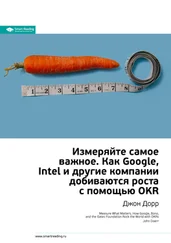Wexner, Interview with author.
Cloyd, Interview with author.
Killgallon, Interview with author.
Nowell, Interview with author.
Clark, Interview with author.
Diffenderffer, W. 2008. Interview with author, October 23; Kohrt, C. 2008. Interview with author, March 5.
Altman, L. K. 2008. A checklist to protect patients in surgery. International Herald Tribune, June 26; Coope, K. 2006. Getting «smart» about role models. Chain Store Age, October, 46–48; Nunes, P. F., Mulani, N. P., and Gruzin, T. J. 2007. Leading by imitation. Outlook 1, January.
Gittell, J. H. 2003. The Southwest Airlines way. New York: McGraw-Hill, 5.
Tedlow, R. S. 1990. New and improved: The story of mass marketing in America. New York: Basic Books.
Kohrt, Interview with author; Fischer, Interview with author.
Shackelford, Interview with author.
Steve Jobs speaks out. 2008. CNN Money/Fortune, March 6.
March, J. G, Sproull, L. S., and Tamuz, M. 1991. Learning from samples of one or fewer. Organization Science 2, 1, 1–13; Kim, J. Y., and Miner, A. S. 2007. Vicarious learning from the failures and near-failures of others: Evidence from the US commercial banking industry. Academy of Management Journal 50, 2, 687–714; Levinthal, D. A., and March, J. G. 1993. The myopia of learning. Strategic Management Journal 14, 95–13; Miller, D. 1993. The architecture of simplicity. Academy of Management Review 18, 1, 116–138.
Shackelford, Interview with author.
Cho, D. S., Kim, D. J., and Rhee, D. K. 1998. Latecomer strategies: Evidence from the semiconductor industry in Japan and Korea. Organization Science 9, 4, 489–505, cite on 498.
Cloyd, Interview with author.
Wexner, Interview with author; Shackelford, Interview with author.
Vriends, Interview with author.
Laswell, M. 2008. Under the lid: A fresh sales idea (review of Tupperware unsealed by Bob Kealing, U. of Florida Press, 2008). Wall Street journal, July 30.
Hogan, D. G. 2007. Selling’ em by the sack: White Castle and the creation of American food. New York: NYU Press; Rivkin, J. W. 2001. Reproducing knowledge: Replication without imitation at moderate complexity. Organization Science 12, 3, 274–293; Big bite. 2008. Economist, April 26, 107.
Ortega, B. 1998. In Sam we trust. New York: Times Business/Random House.
Sam Walton, as cited by Tedlow, New and improved: The story of mass markting in America.
Kimes, M. 2009. The king of low cost drugs. Fortune, August 17.
Greenstein, S. 2004. Imitation happens. Micro Economics, May — June, 67–69; Agam, Y., Galperin, H, Gold, B. J., and Sekuler, R. 2007. Learning to imitate novel motion sequences. Journal of Vision 7 (5), 1, 1–17; Teece, D. J. 1977. Technology transfer by multinational firms: The resource cost of transferring technological know-how. Economic Journal 87, 242–261.
Clark, Interview with author.
Vriends, Interview with author.
Diamond, Guns, germs and steel; Westney, Imitation and innovation: The transfer of Western organizational patterns to Meiji Japan.
Leblebici, H., Salancik, G. R., Copay, A., and King, T. 1991. Institutional change and the transformation of interorganizational fields: An organization history of the US radio broadcasting industry. Administrative Science Quarterly 36, 333–363.
Ortega, In Sam we trust.
Wexner, Interview with author.
Gittell, The Southwest Airlines way.
Ibid., 217.
Kim and Miner, Vicarious learning from the failures and near-failures of others, 692.
Meltzoff, A. N., and Docety, J. 2003. What imitation tells us about social cognition: A rapprochement between developmental psychology and cognitive neuroscience. Philosophical Transactions: Biological Sciences 358, 1431, 491–500; March, Sproull, and Tamuz, Learning from samples of one or fewer; Wohlschlager, A., Gattis, M., and Bekkering, H. 2003. Action generation and action perception in imitation: An instance of the ideomotor principle. Philosophical Transactions: Biological Sciences 358, 1431, 501–515; Byrne, R. W. 2003. Imitation as behavior parsing. Philosophical Transactions: Biological Sciences 358, 1431, 529–536; Harley, S., and Chater, N. 2007. Introduction: The importance of imitation. In Perspectives on imitation: From neuroscience to social science, eds. S. Harley and N. Chater. Cambridge, MA: MIT; Spence, K. W. 1937. Experimental studies of learning and higher mental processes in infra-human primates. Psychological Bulletin 34, 806–850, as cited in Byrne, Imitation as behavior parsing.
Meltzoff and Docety, What imitation tells us about social cognition: A rapprochement between developmental psychology and cognitive neuroscience; Kim and Miner, Vicarious learning from the failures and near-failures of others; March, Sproull, and Tamuz, Learning from samples of one or fewer; Wohlschlager, Gattis, and Bekkering, Action generation and action perception in imitation; Byrne, Imitation as behavior parsing; Henderson and Clark, Architectural innovation; Harley and Chater, Introduction: The importance of imitation; Spence, Experimental studies of learning and higher mental processes in infra-human primates.
Shackelford, Interview with author.
McKendrick, D. 1994. Building the capabilities to imitate: Product and managerial know-how in Indonesian banking. Industrial and Corporate Change 3, 513–535.
Bryant, A. 1995. Continental is dropping «Lite» service. New York Times, April 14.
Ortega, In Sam we trust.
Hof, R. D. 2004. At P&G, it’s 360 degrees innovation. BusinessWeek, October 11. Based on an interview with G. Cloyd.
Ludlam, T 2008. Interview with author, May 8.
Kimes, Teva: The king of generic drugs.
Levitt, T. 1966. Innovative imitation. Harvard Business Review, September-October, 63–70, cite on 65.
Levin, R. C, Klevorick, A. K., Nelson, R. R., and Winter, S. G. 1987. Appropriating the returns from industrial research and development. Brookings Papers on Economic Activity 3, 783–831.
Читать дальше
Конец ознакомительного отрывка
Купить книгу












